Some things never change. There was a buzz about Manchester United heading into their first Premier League game of the season. A new man in a swapped dugout, two new signings on the pitch, and a different style of play that hasn’t been seen since the days of Louis van Gaal.
Unfortunately for the Red Devils, history repeated itself. Just as van Gaal lost on his league debut at home against Swansea City back in 2014, Erik ten Hag’s side were put to the sword by Brighton and Hove Albion.
Despite some impressive performances in pre-season, United looked defective, dismal and downright shoddy, a continuation of last season’s disaster.
However, even though Man United will hit the back-pages as they so often do, credit must be handed to the visitors. Despite losing both Yves Bissouma and Marc Cucurella, the Seagulls were superb, playing without fear, ripping the hosts to shreds, particularly in the first half.
While the fall and fall of Manchester United has carried over into the new campaign, Brighton managed to pick up where they left off from last season’s ninth-place finish, taking all three points at Old Trafford for the first time in history with a 2-1 win.
This tactical analysis piece will be an analysis of Brighton’s tactics at the Theatre of Dreams on Sunday, looking at why Graham Potter outclassed ten Hag in a great battle of the minds, with a particular focus on their dominant first-half display.
Lineups and formations
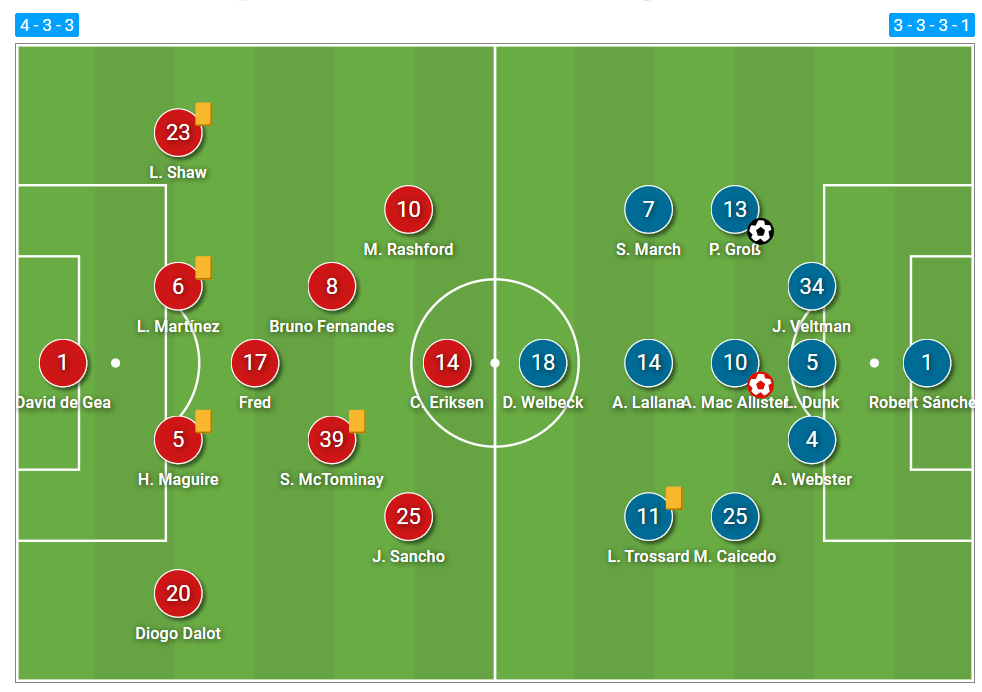
Beginning with the visitors, there were no surprises as ten Hag lined his new side up in the 4-3-3 even though the team had been playing with a 4-2-3-1 throughout pre-season.
David de Gea started in goal, protecting the daunting goalposts behind a backline comprising of Luke Shaw, new signing Lisandro Martinez, captain Harry Maguire and Diogo Dalot.
Fred started as United’s single pivot, with Bruno Fernandes and Scott McTominay playing further forward. Christian Eriksen was deployed in an unlikely false ‘9’ role, flanked by Marcus Rashford and the tricky Jadon Sancho.
For Brighton, Potter set his underdogs up in a 3-3-3-1 which morphed into a 3-5-1-1/5-3-1-1 without the ball.
De Gea’s national team competitor Robert Sanchez began between the sticks, with Adam Webster, Lewis Dunk and Joel Veltman making up the back three.
Further ahead, Moises Caicedo, Alexis Mac Allister and the double goalscorer Pascal Groß partnered in midfield, flanked by Leonardo Trossard and Solly March. Meanwhile, Adam Lallana sat just behind target man and former Red, Danny Welbeck.
Brighton changed their approach
Under Chris Houghton, Brighton were very much a pragmatic side, one that was quite direct in their play, looking to get the ball up to the centre-forward as soon as possible. Out of possession, the Seagulls would sit deep and maintain compactness between the lines in a more passive fashion.
However, since Potter’s arrival in 2019, Brighton were taken to new levels, one with a more expansive style of play and a far greater emphasis on ball possession.
Potter exemplifies a very modern-day manager. His side have become known for playing out from the back in a seamless fashion. However, against Manchester United, the 47-year-old changed his side’s approach to something that has rarely been seen during his tenure.
From the build-up phase, Brighton constantly looked to go long. This can be seen from Sanchez’s pass map.
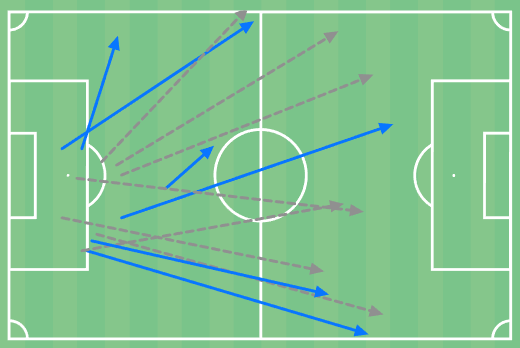
The Spaniard completed six of his total passes against United, with four of them being long balls from goal-kicks. Even the long passes that were unsuccessful ended up being retained after the players pressed to win the second ball.
Brighton’s aim and structure set them up for success which is a credit to Potter and the players. When Sanchez went long, the team pushed up into an extremely compact shape. The target was always Welbeck given his wonderful ability in the air and at holding up the ball.
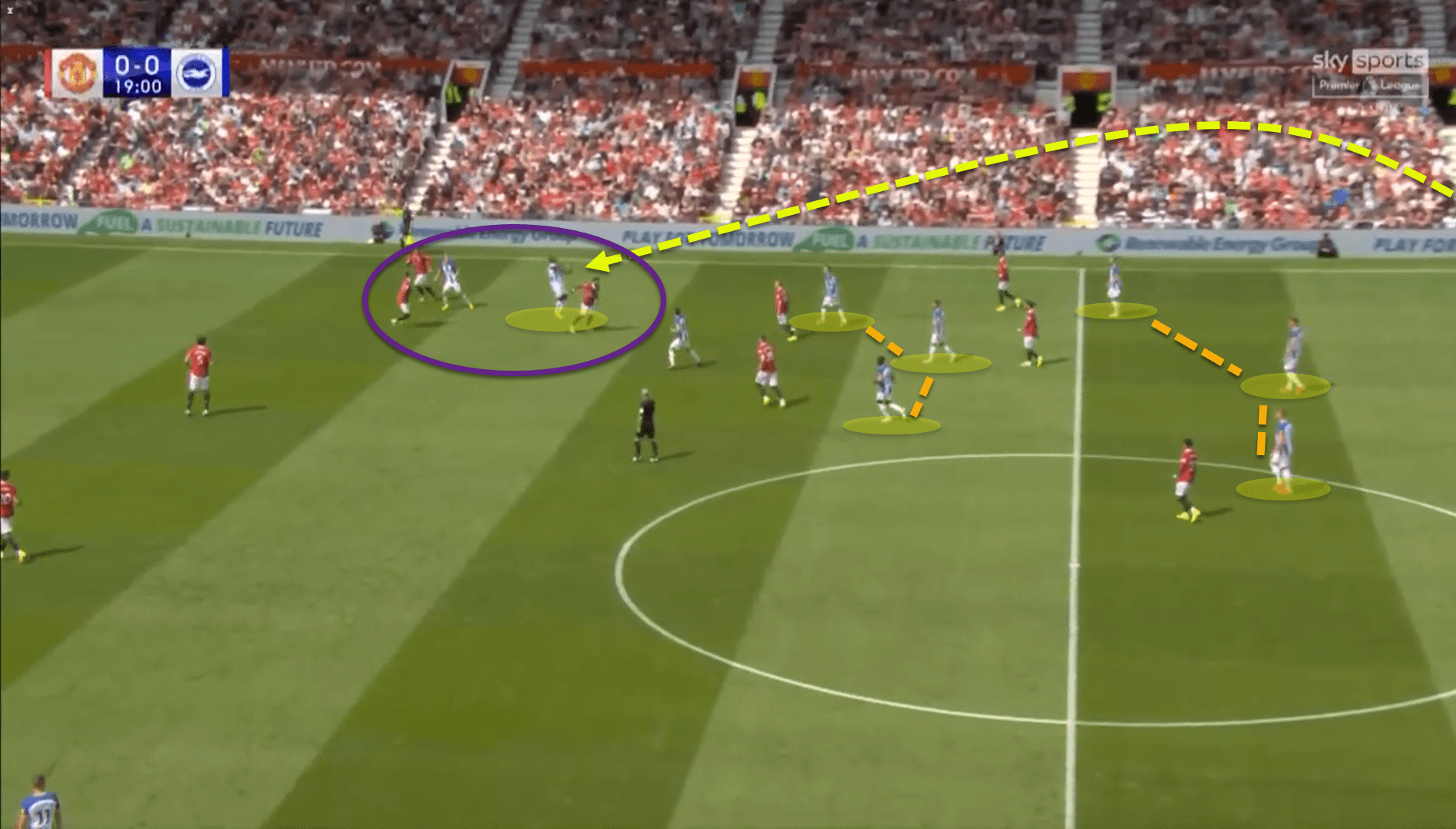
Unfortunately, as many feared it would, Brighton aimed to exploit Lisandro Martinez’s weaknesses on his competitive debut for Manchester United. At 5’9, it was yet to be seen how the Argentine would fair when competing against a well-built target man in the air.
His first test was cause for concern. As Maguire would have been able to match Welbeck, the English centre-forward continuously positioned himself onto Martinez to compete for balls in the air. The 24-year-old struggled to get to grips with Welbeck and did not win a single aerial duel in the whole game.
Martinez would either compete with Welbeck and lose, or else back off and allow the Brighton striker to go it alone, as can be seen from the image above. What would have helped Man United was if ten Hag instructed McTominay to sit on Welbeck during these moments but, strangely, this never happened.
Since the beginning of last season, just 9.08 percent of Brighton’s total passes per game were long balls. On Sunday, this significantly leapt to 13.59 percent.
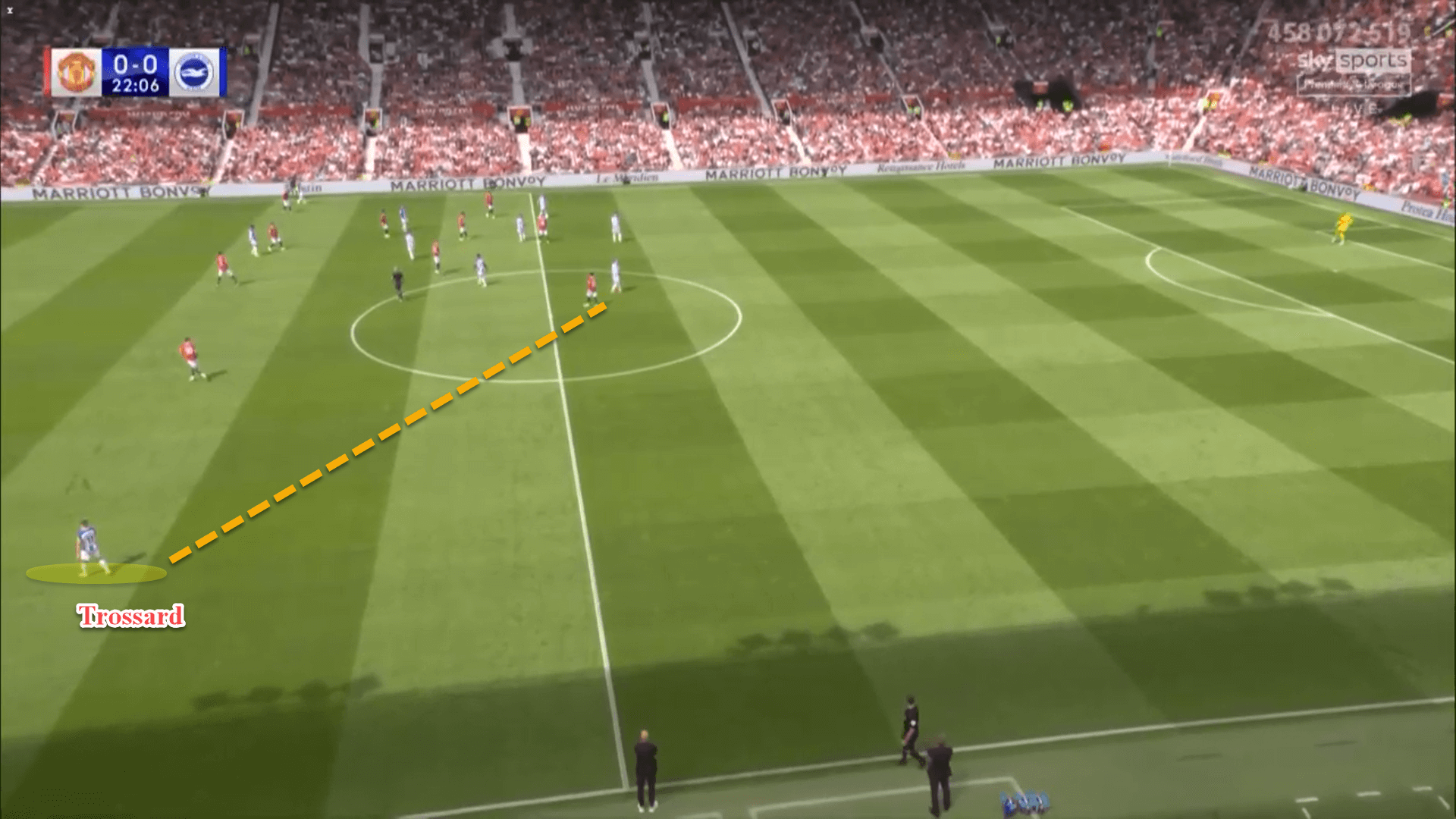
What was more interesting was Brighton’s plan after winning the second ball from these goal-kicks. As the players were all compact and close together, they could quickly press to recover possession in these higher areas.
But one man stayed away from the pack. Trossard, the lone wolf, would hold a very wide position on the left-hand side. Brighton’s strategy was, where applicable, to try and quickly switch it out to him so he could try and isolate Diogo Dalot in a 1v1 duel.
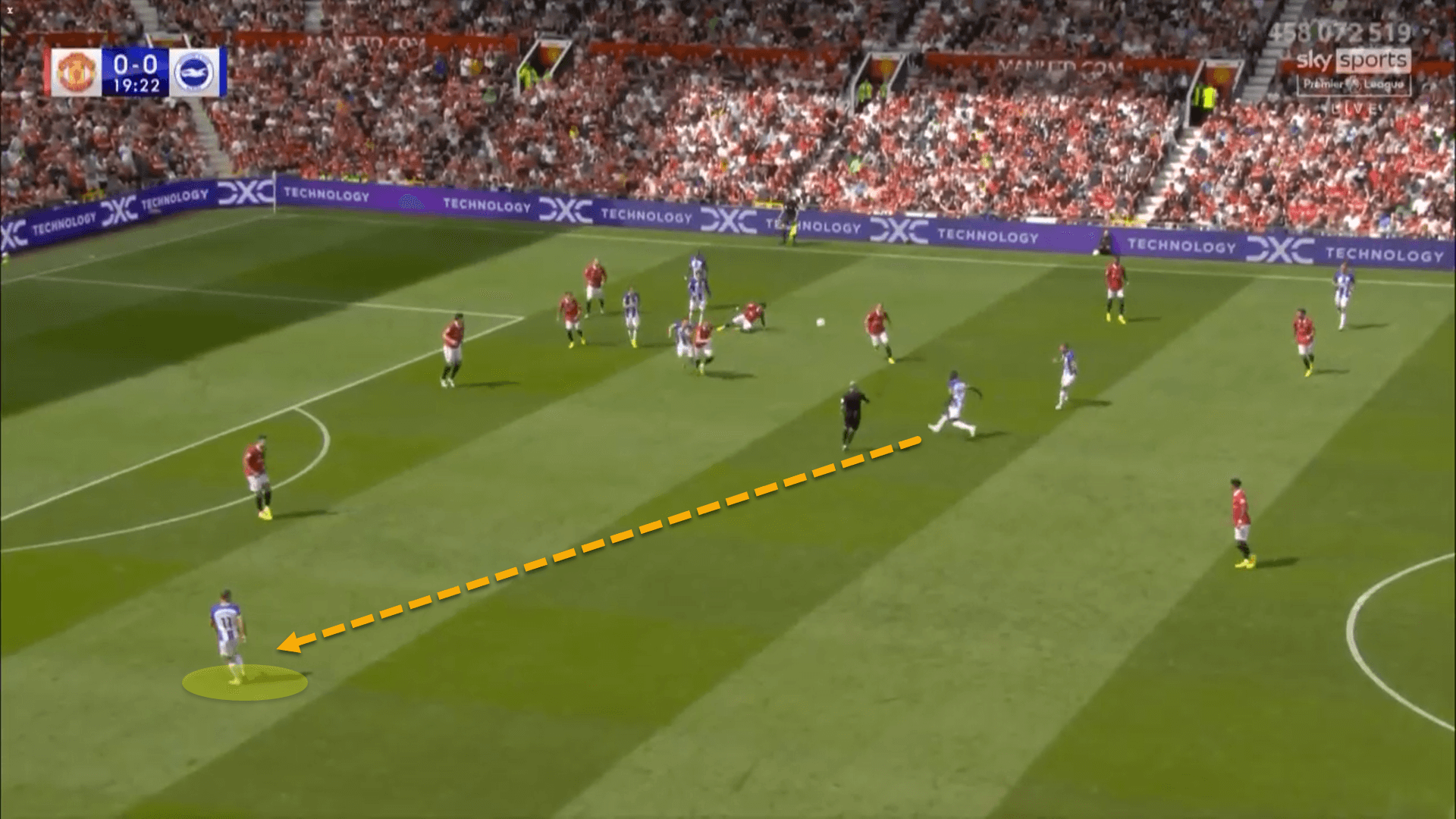
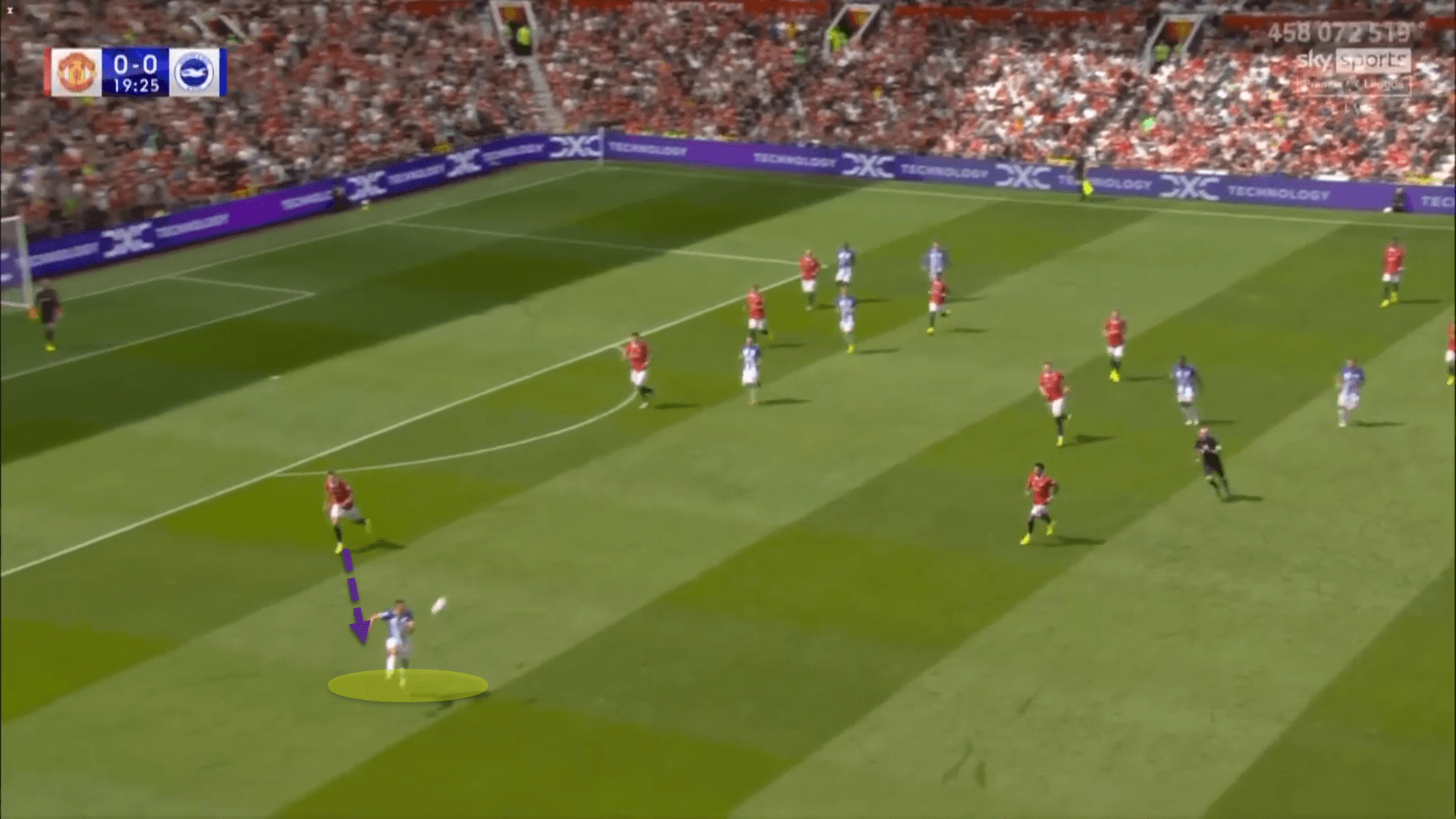
While the intended switches out to Trossard did not really pay off for Potter’s side, going long worked a treat as the Seagulls were still able to retain the ball in higher areas instead of bypassing United’s high press.
Ten Hag has drilled his side really well in terms of their pressing which became noticeable in pre-season. Knowing that his players may struggle against United’s press, Potter decided not to go toe-to-toe in this phase, instead instructing his players to play direct – an excellent tactical tweak by the English coach.
Speaking in his post-match press conference, ten Hag admitted his surprise at this change in play-style:
“Brighton is a team who normally want to play from the back. They didn’t today. They played long ball. So it’s not about pressing, it is about winning the second ball.” Failure to win these second balls was one of Manchester United’s biggest downfalls from the match.
Balls into the channels and lightning transitions
Another way Brighton looked to take advantage of the hosts was by exploiting their weaknesses in the midfield and backline. The Red Devils are crying out for a midfielder in the ilk of a Rodri or Fabinho, but ten Hag was forced to settle with Fred as the single pivot.
Despite being used as a double-pivot duo under Ole Gunnar Solskjær, McTominay and Fred played further apart for the Dutchman’s first league game. In ten Hag’s 4-3-3, McTominay would often push up into the right halfspace with Fred screening in front of the backline to provide a forward passing option behind the first line of pressure.
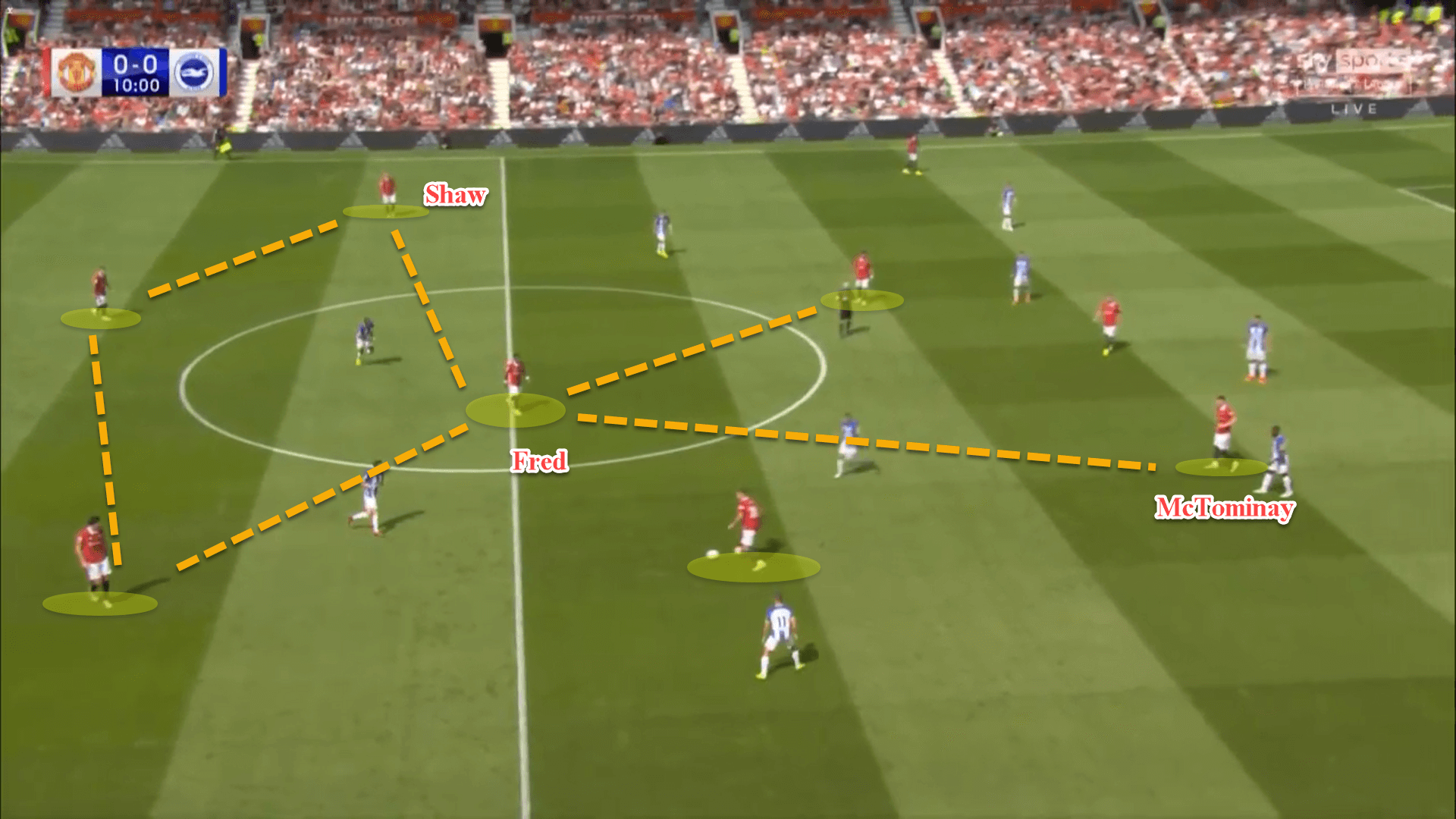
Looking at the example above, we can see Man United’s shape in possession. In these higher areas, Shaw would tuck inside while Dalot would position himself further forward to create a 3-1 structure at the base with Fred operating as the single-pivot.
The issue for United was that, over the years, Fred and McTominay have come as a package deal. Under the previous two coaches, the pair were utilised in a 3-2 base structure which provided a little more stability during defensive transitions.
Against Brighton, with McTominay positioned higher, it often left Fred alone with little support in the middle of the park during defensive transitions. Brighton smelled this weakness and preyed on it.
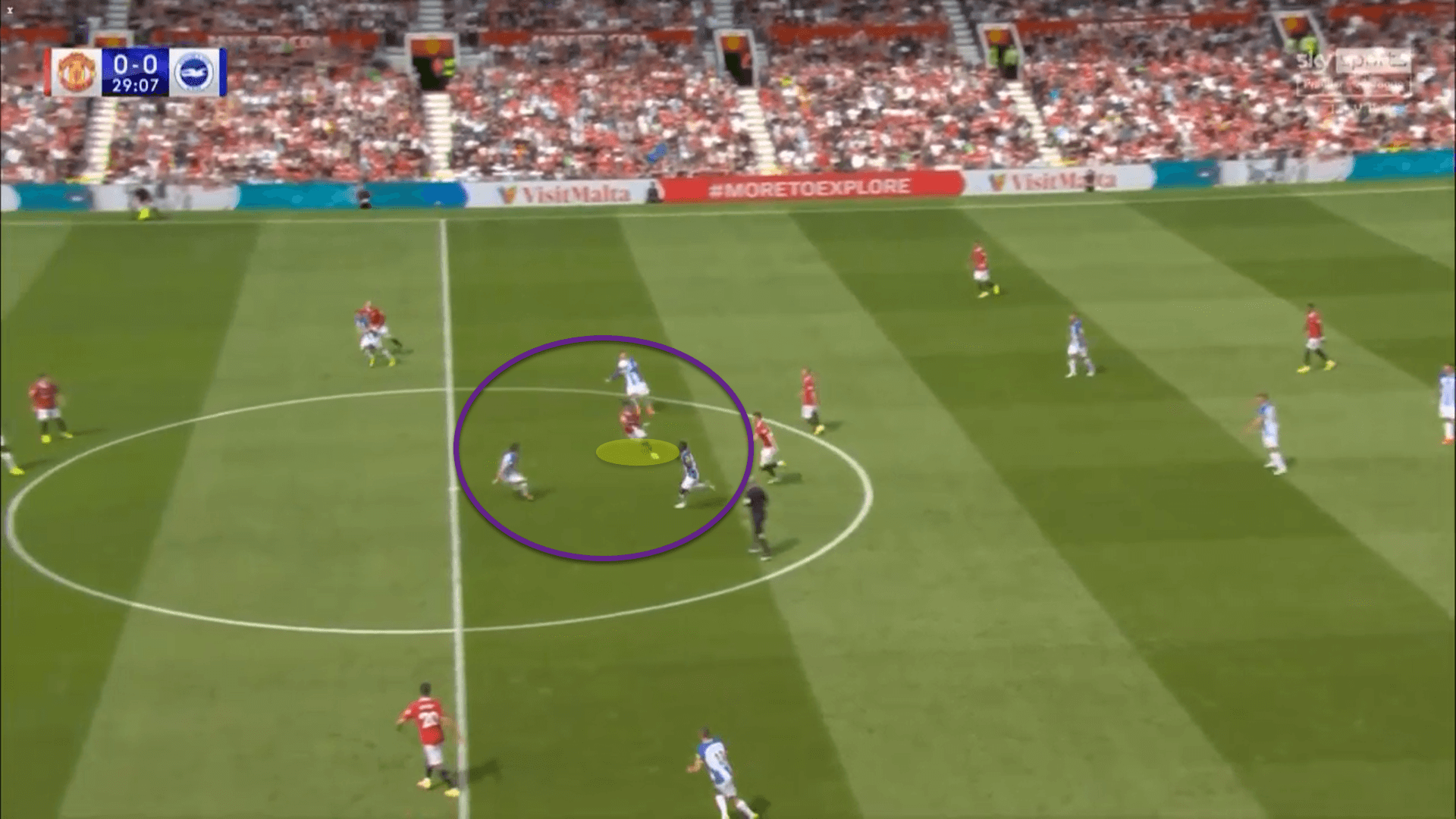
This is what led to the opening goal of the game. McTominay, perhaps naively, attempted to drive through two Brighton players before losing possession. Fred stepped up to close down the space between himself and the more advanced midfielders, but the Seagulls easily played around him.
Again, this was another tactical ploy by Potter. Man United showed the blueprint for this in pre-season and the problem reared its ugly head once more on Sunday. Only this time, the game mattered.
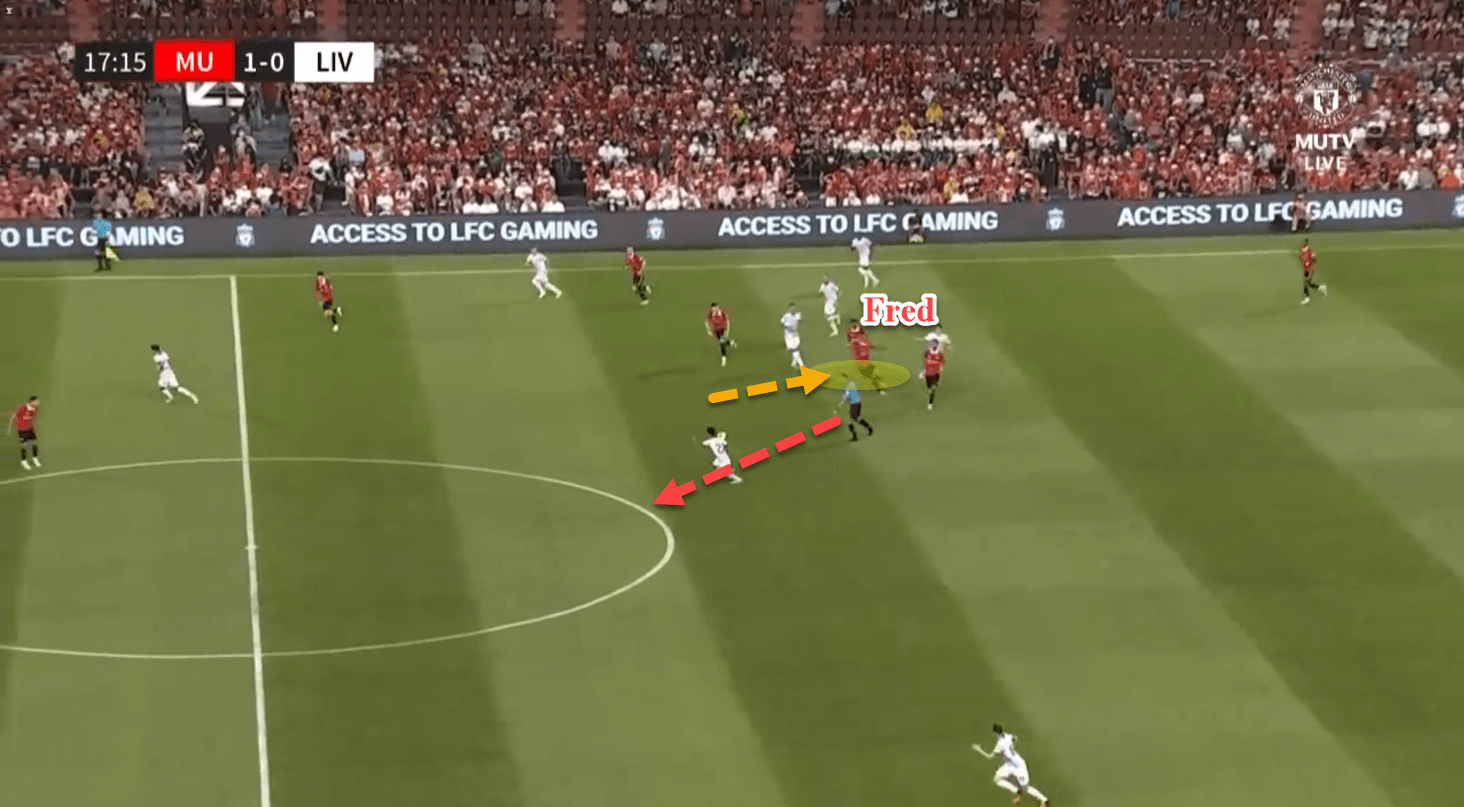
Brighton also wanted to take advantage of United’s struggles in dealing with channel balls. Due to the hosts’ rather blasé and lapsed rest defence structure, the backline was often quite spread out.
This left spaces in the channels for balls to be played into. From there, Brighton could isolate United’s centre-backs, particularly Maguire due to his poor recovery speed. Whether it was Welbeck, Lallana, March or Trossard, the visitors constantly attacked these spaces.
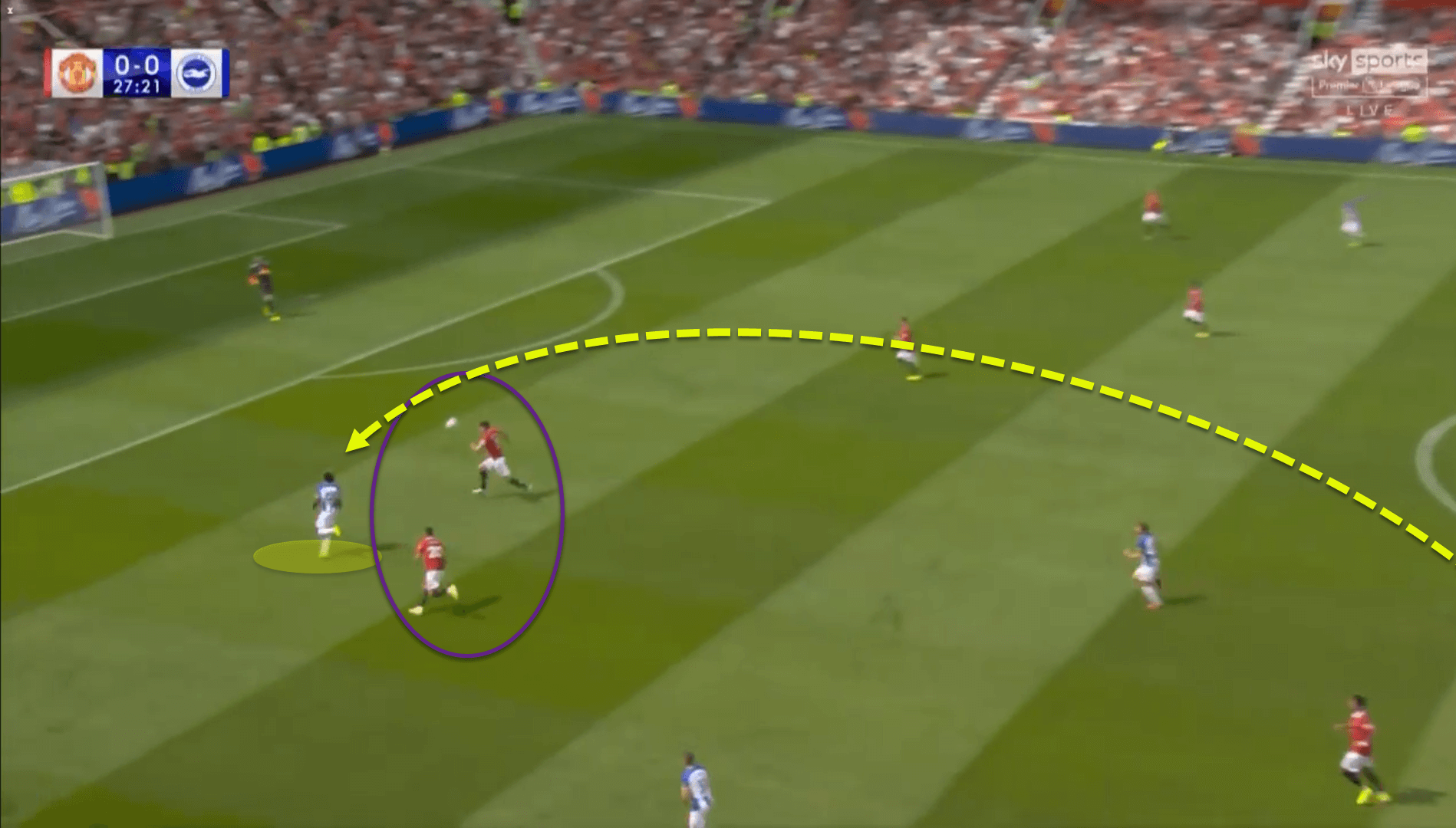
As the game reached the half-hour mark, Brighton were given their just rewards, punishing United from both an attacking transition and a ball into the channel.
United’s backline was pulled apart, isolated and left for dead as Groß poked home at the back-post to send a starstruck, Old Trafford into a shuddering silence.
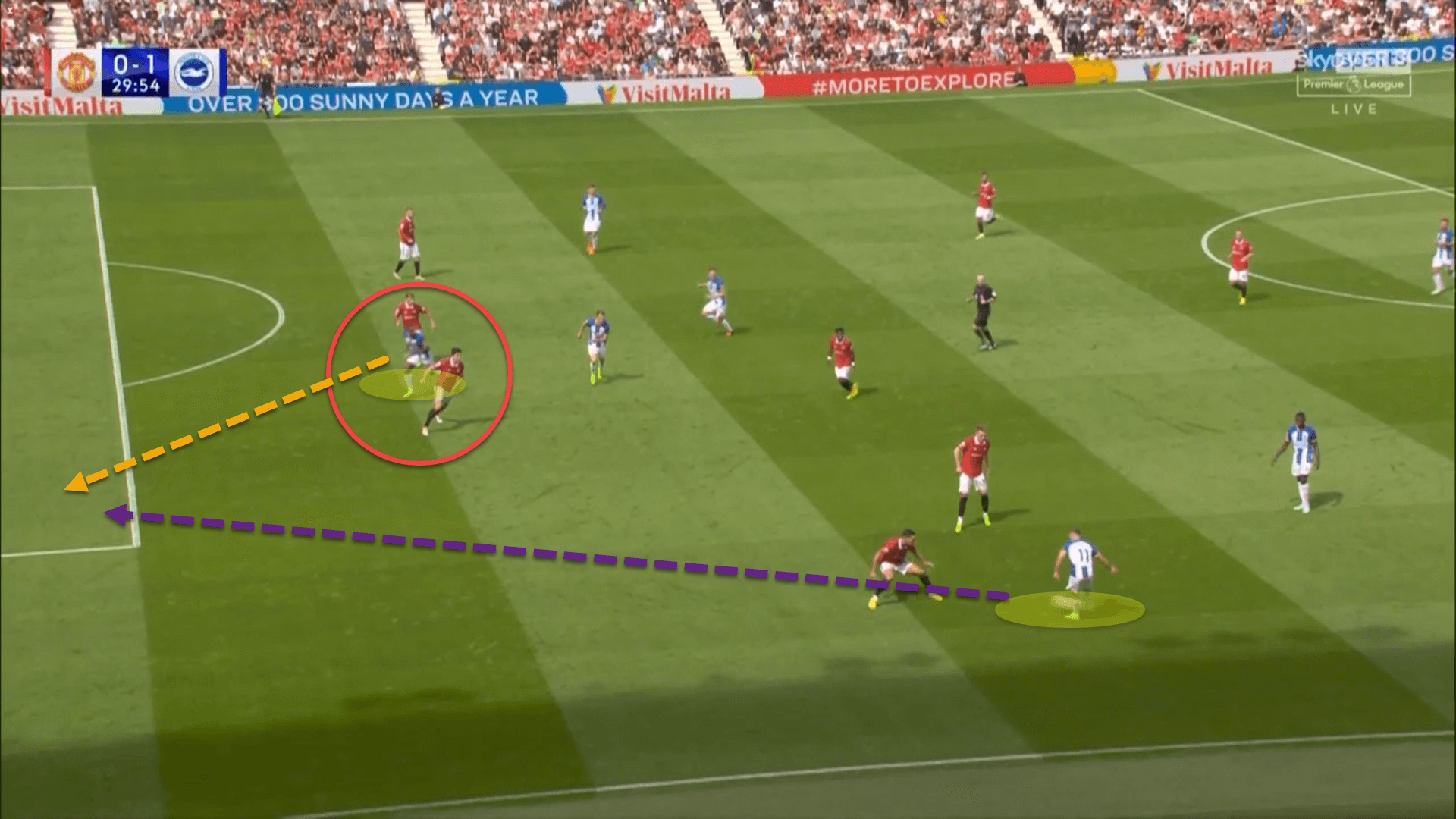
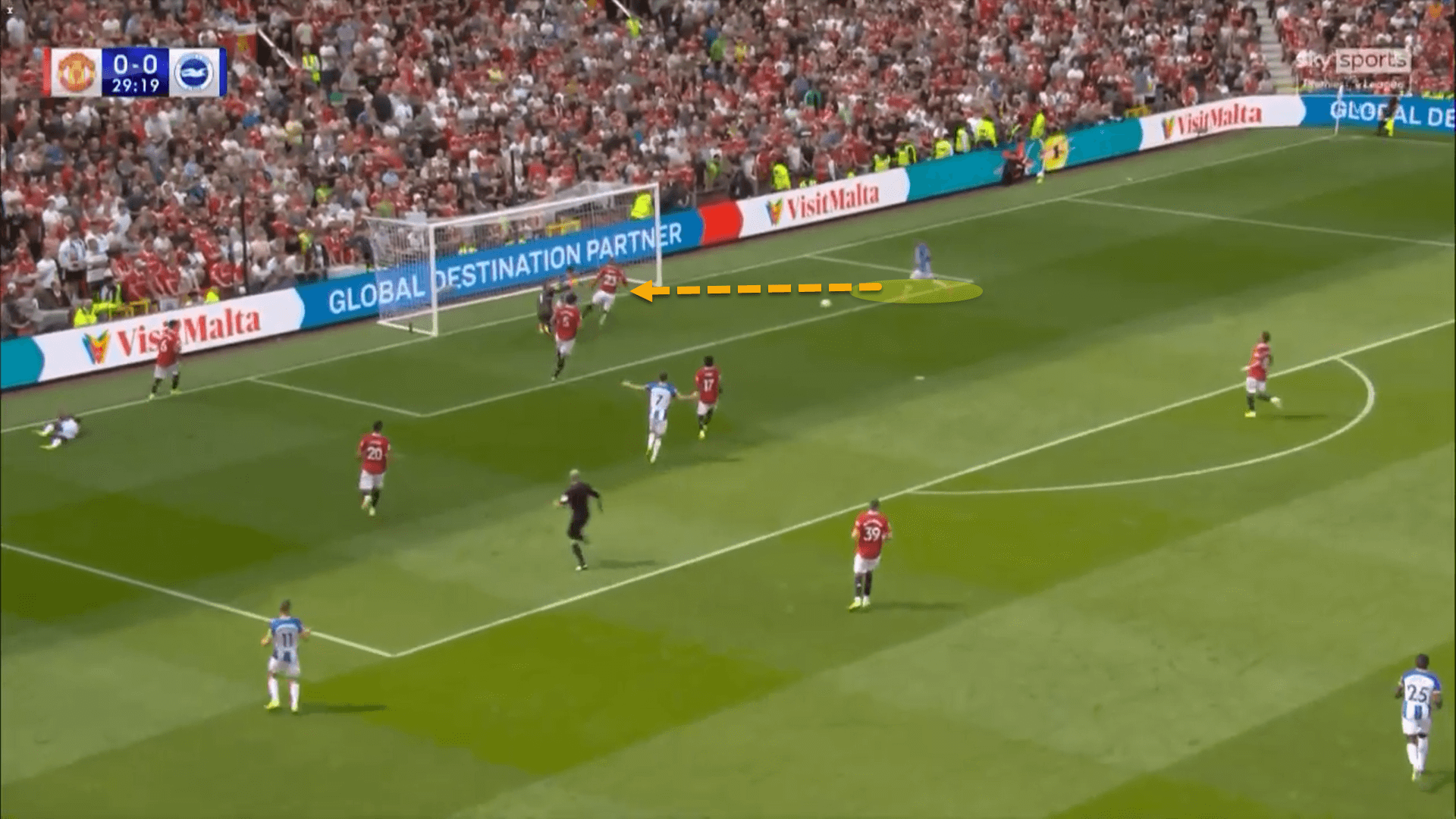
Brighton’s defensive acumen
Brighton’s defensive shape was incredibly fluid. Potter knew that Man United would be flexible in possession with plenty of rotations and so wanted his players to be adaptable, particularly when the Seagulls were pressing United high up the pitch.
Potter’s men set up in a 3-3-3-1 in their high block phase, but it would convert to a 3-2-3-2 or even a 3-3-2-2 depending on the positioning of Lallana and the three central midfielders.
Despite playing as wingbacks, March and Trossard were essentially wingers while Brighton were pressing, placing themselves high to press United’s fullbacks. Brighton’s tactics were obvious from the get-go.
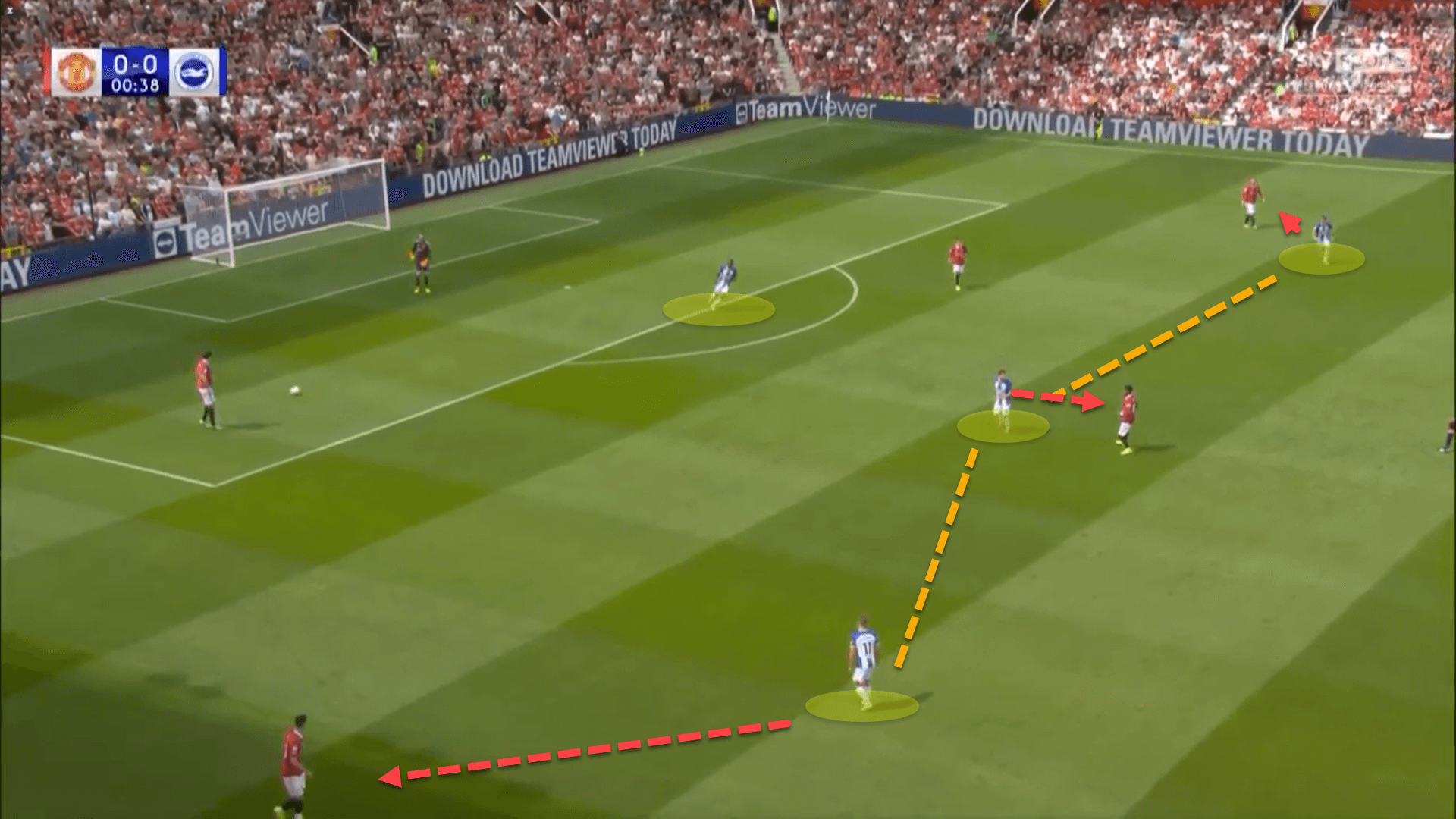
Welbeck would usually lead the press, closing off the passing lane to one centre-back, generally Martinez because of his superior ball-playing skills. Further back, Lallana would sit off and block the passing lane into Fred, who, as we said earlier, was United’s single-pivot.
If Lallana stepped up to close down Maguire or de Gea, he would apply a cover shadow to Fred. However, the nearest central midfielder would also move up to close down the Brazilian midfielder.
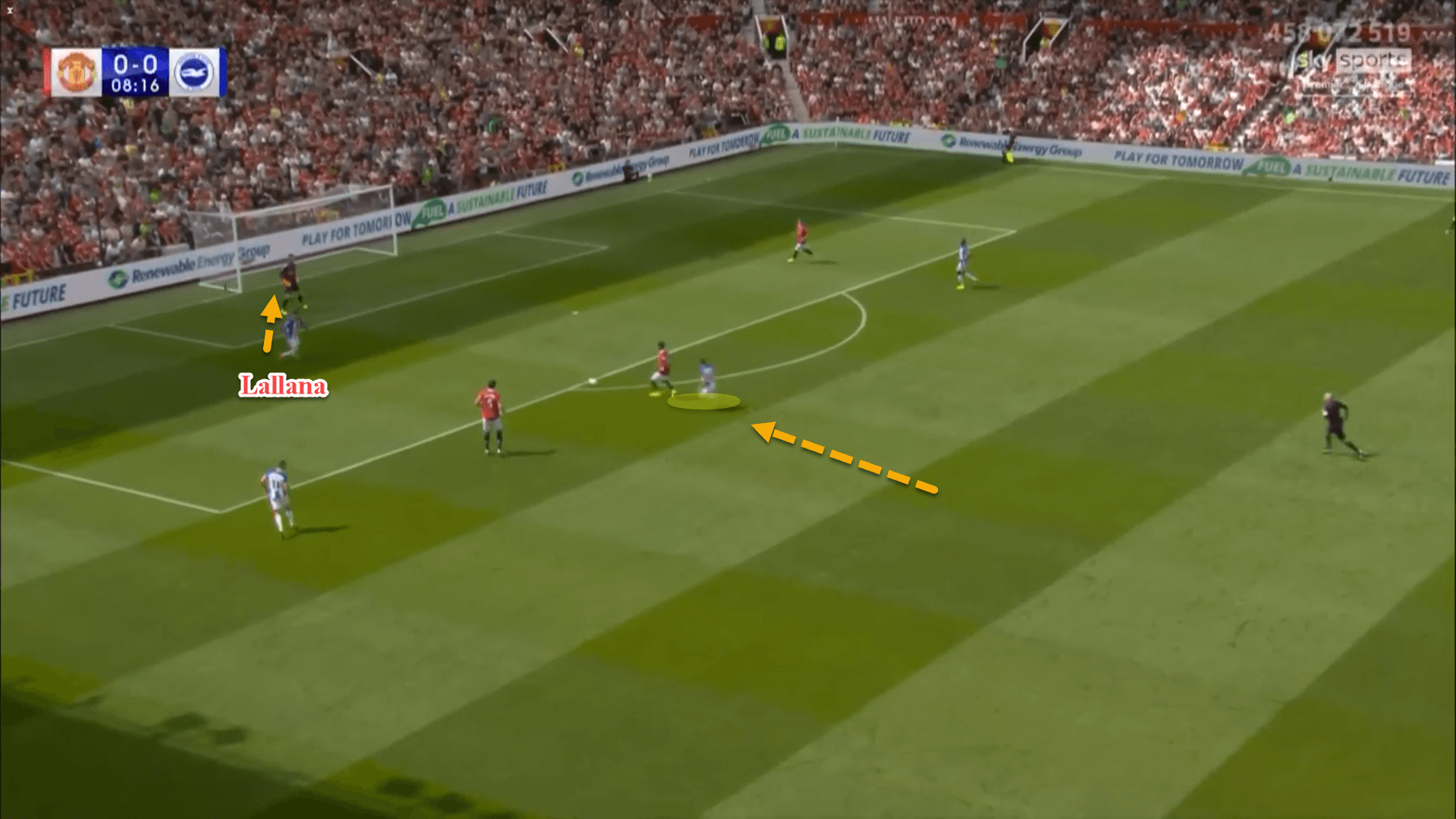
This situation led to an excellent turnover of possession from a high-pressing situation. Fred was quickly closed down by Mac Allister and sloppily gave the ball away in a dangerous position.
Brighton’s central midfielders adopted a flexible man-to-man approach further down the pitch. This was smart by Potter as Eriksen and Fernandes were consistently rotating positions and trying to receive the ball in different areas of the pitch.
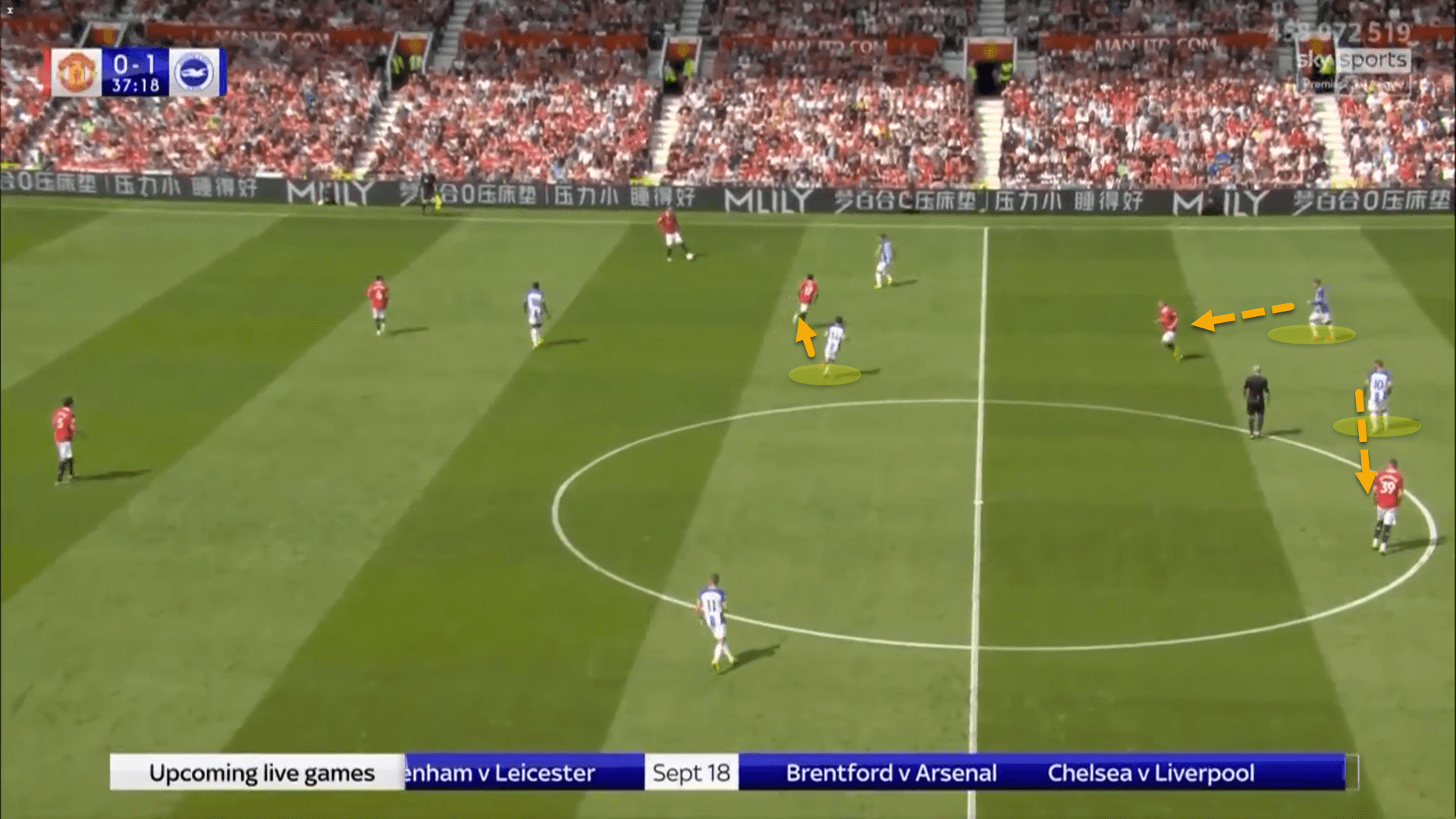
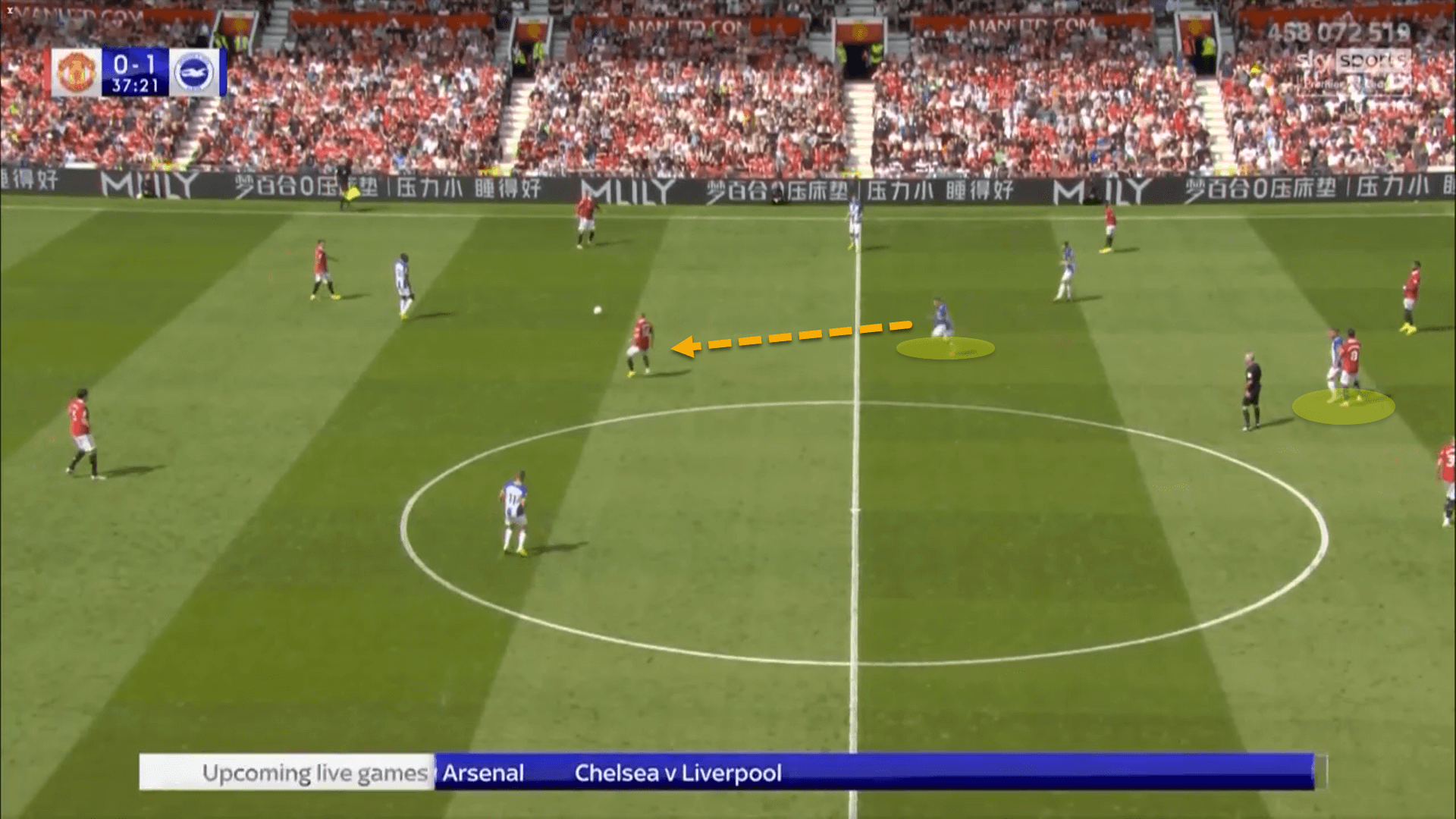
This stifled the United midfield’s ability to have time and space on the ball, being forced to rush passes and so the Red Devils couldn’t really get any rhythm going.
There seems to be a false narrative batting about that Brighton sat off United for large parts of the match, but this simply isn’t true. The Seagulls’ maintained a similar Passes allowed Per Defensive Action (PPDA) metric throughout, averaging 9.88 over the course of the match which shows that the side were very proactive in their defensive approach, not allowing United to swarm them time and time again with waves of attacks as an Erik ten Hag team so often does.
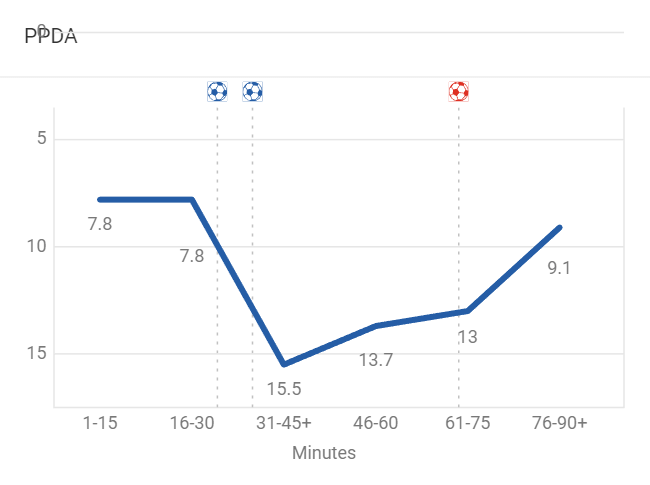
The only real drop-off by the visitors was the fifteen-minute spells before and after the interval.
When the full-time whistle was blown, Manchester United boasted 57.59 percent of the ball to Brighton’s 42.41 percent. However, Potter’s side held an xG of 1.85 to United’s 0.79, according to Wyscout. Possession without purpose is problematic. Brighton gave their play no purpose.
Conclusion
It certainly was not the start that Manchester United nor ten Hag wanted to kick off the season, but credit must be given to Graham Potter and his valiant Seagulls.
Brighton were excellent throughout and fully deserved to walk away from the great gallery of the Theatre of Dreams with the three points to kick off what could be an exciting season for the side on the south coast.






Comments